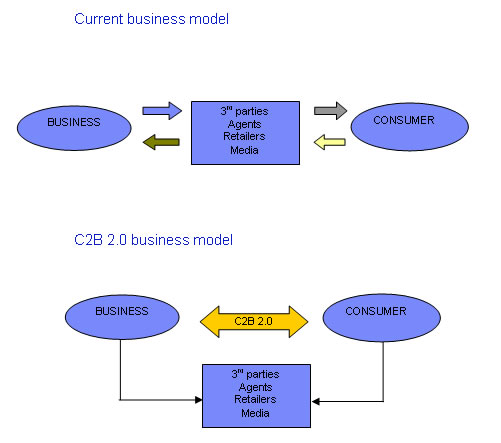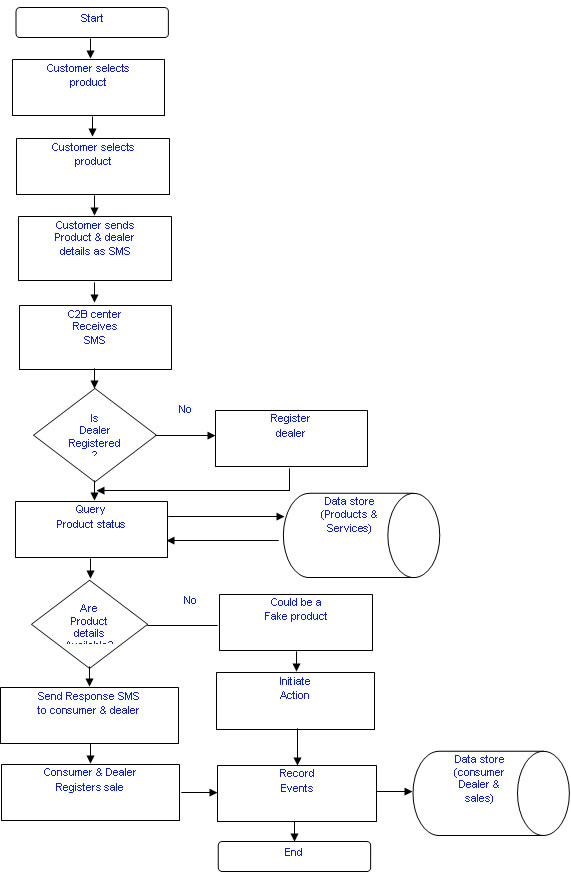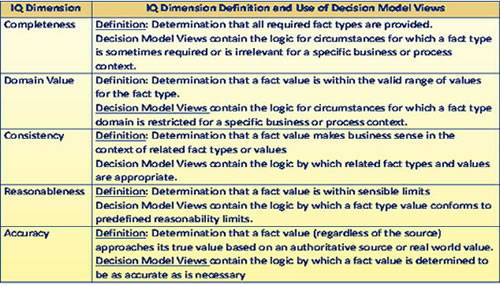In this market scenario, protecting the consumers from falling prey to counterfeit products becomes one of the primary tasks of business processes. It not only helps consumers get the real value for their money, but also helps the businesses to build their brand value and trust.
By implementing C2B 2.0, business can effectively control the market by completing removing the counterfeit products, and also additionally open a new channel with consumers directly for feedback on the products and services and for handling complaints. This could potentially be the base for the next generation CRM.
Introduction
Stepping inside a showroom, choosing the product, making payment and getting delivery – this is how a typical sale happens today. But, is the money paid for an original product? Does an Indian consumer have the power to verify this? We have come across so many incidents where counterfeit / used goods are sold instead of genuine one. This could happen anywhere right from the bottled drinking water to life saving drugs. How are the businesses going to handle this, and how can the consumer be sure that the value for money is attained? This article explains how a small step towards Information Management with co-ordination of People, Process & Tools (PPT) can effectively make both ends meet.
It is evolving as a primary responsibility of the companies to make sure that the products in the market is trustable by the consumers. This involves not only controlling the internal supply chain system, but also making sure that no other system intrudes in their process. We all agree that the businesses alone cannot achieve this, but the responsibility lies with them.
Need for C2B 2.0
As I see today, the major problem of the consumer market is, there is no communication between the consumers and businesses, and this happens only through 3rd parties like dealers, agents, media etc. Businesses are very much aware that consumers are rating the product / service based on the experience they get from these intermediaries. This gap should be filled in, which will make the communications more meaningful and powerful. This communication enables consumers in finding the real value for what they are paying for, and also empowers the business to reach directly to consumers for their business processes. This includes feedback on product /services, handling complaints, marketing etc.
The statistics about counterfeit market are really shocking. According to Financial Express, 15-20% of all medicines, 10-30% of Fast Moving Consumer Goods (FMCG), and 35% of automotive components sold in India are counterfeit. An AC Neilson – FICCI survey found that annual revenue loss for the music industry due to piracy is 6 Billion Indian Rupees, for movie industry, computer peripherals, clothing and apparels are around 20 billion Rupees each. There is no wonder that all the businesses are finding out ways to fight the fake market, and protecting consumers in falling prey to them. C2B 2.0 gives a solution to this problem.
 |
What is C2B 2.0 and how does it work?
C2B 2.0 defines the roles and responsibilities of People, Process & Tools (PPT). The approach is towards building a robust system which helps the businesses in controlling the market. The business can define their roadmap, milestones etc in the C2B 2.0 implementation to make it more effective and if required for a specific problem area.
The business will take responsibility for:
- Maintaining a trustable information management system which has all the details about the product they are manufacturing. The details may include unique ID like barcode, manufacture date, expiry date, price, shipped location details, shipped dealer etc.
- Having a mobile messaging service number / internet application which can be configured to directly access the servers and databases using SOA architecture.
- Making all the dealers / dealer groups to register with them who are authorized to sell their products.
- Defining process for registration of sale with dealers.
The dealer / 3rd parties will take responsibility for:
- Registering a designated mobile number to the business
- Initiating the sale / service
- Registering the sale / service
The consumers will take responsibility for:
- Initiating the sale/service
- Registering the sale / service
- Feedback / comments to business
The business can come up with marketing schemes like in-store discounts, cash back offer etc to encourage the consumers to follow this process.
C2B 2.0 possible process steps
- Business maintains a ready to access system which has details of their valid products which can be uniquely identified by product ID (PID).
- Business owns a mobile service number (MSN) for queries / Internet application within the dealer location for consumers to check
- Dealer registers the mobile number with business and gets a designated dealer service code (DSC)
- Consumers selects the product, finds PID.
- Consumer sends the PID and DSC as SMS (M1)to MSN from the store
- This SMS gets converted into a query(Q2), gets details from the system (A1), converts into a return SMS (M2), sends back to consumer. A2 will have Sale Request Number (SRN) along with other product details which business wants to share. (Consumer can also check details through internet / intranet which is provided by the business to check
- Business also sends this SRN to the dealer (M3)
- Consumer and Dealer verifies the SRN number and initiates the sale
- Dealer sends the bill number / invoice number to business (M4)
- Business sends the bill number to consumer (M5)
- Consumer confirms the sale (M6)
- Dealer prints the SRN, PID in the bill which makes the sale valid for after sale issues.
 |
The above steps can be altered / rearranged / defined based on the business needs.
In case the PID sent by consumer not available in the PID database, then the chances are there for a fake product. The status of these enquiries can be made available to business by alerts, mails, SMS etc. for further action. There can also be an analytical angle which analyzes the information about the sales, its region, dealers, services etc. to come up with informed business decisions.
The messages M2 & M6 can be used by the business to block a defective product, marketing campaigns, coupons for other promotional offers etc. The messages can be stored to form an informative database which has details about real leads, which is a great asset to the business.
 |
Advantages of C2B 2.0
Eliminates Fake market sales to Consumers, Distributors, Retailers etc
- Builds a communication bridge between the consumer and business, and hence the business receives feedback, complaints etc directly from the consumer
- Opens up a new window of opportunities (Future of CRM)
- Builds brand value and cost savings in marketing
- Business can control the services / products from C2B center (goods callback, pricing etc)
- Helps not only the consumers, but also the distributors, retailers etc can verify the product to avoid fake procurements
This solution can be used not only for consumers but also helpful for distributors, retailers etc, since they can check the validity of the delivery. This is highly useful in case of handling low priced items, and where the procurement is usually in bulk. Other possible areas of this application could in the education sector, where the validity of certificates and marks can be obtained real time.
In the Cloud
The concept can be used in the area of cloud computing, to help the businesses which could not afford the investments. These businesses can share the servers, applications, technologies etc to meet their demand, and get rich benefits.
Conclusion
Till now, B2C is given high importance, where Business reaches out to consumers, and that too mostly for CRM needs. The other areas of business are diluted. But, there is a immense need and huge demand to come out of that traditional thinking and turn the model upside down. I am sure this will be more powerful and profitable, and a door towards enormous opportunities which the business can ever think of. With the current technologies, and competition prevailing in the current market, I believe that the days are not far where the consumer and business come together to complement each other.

















